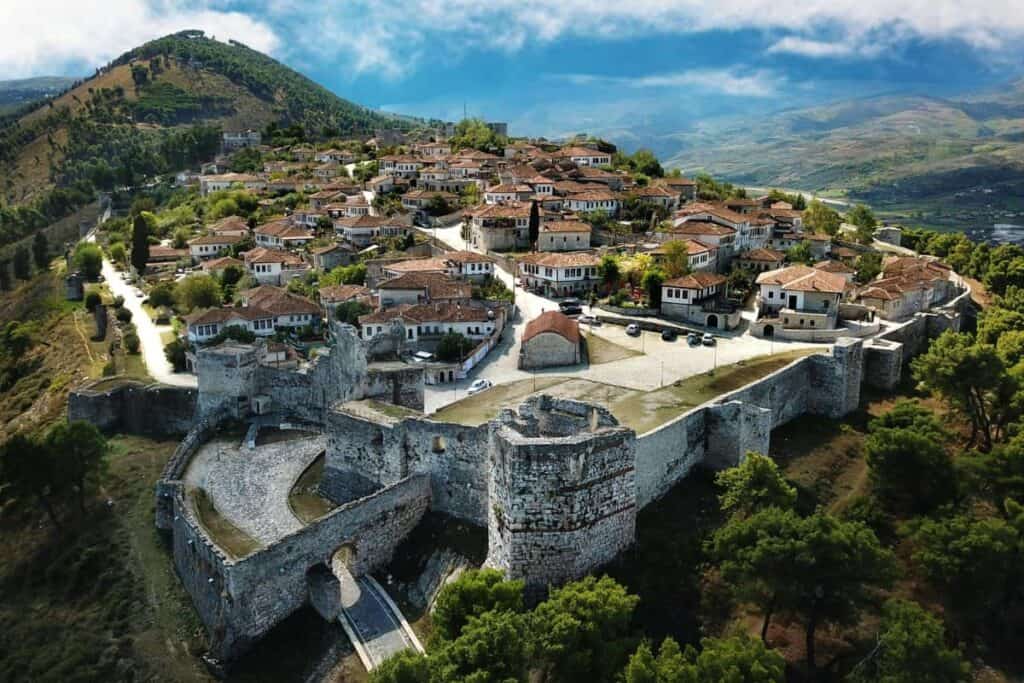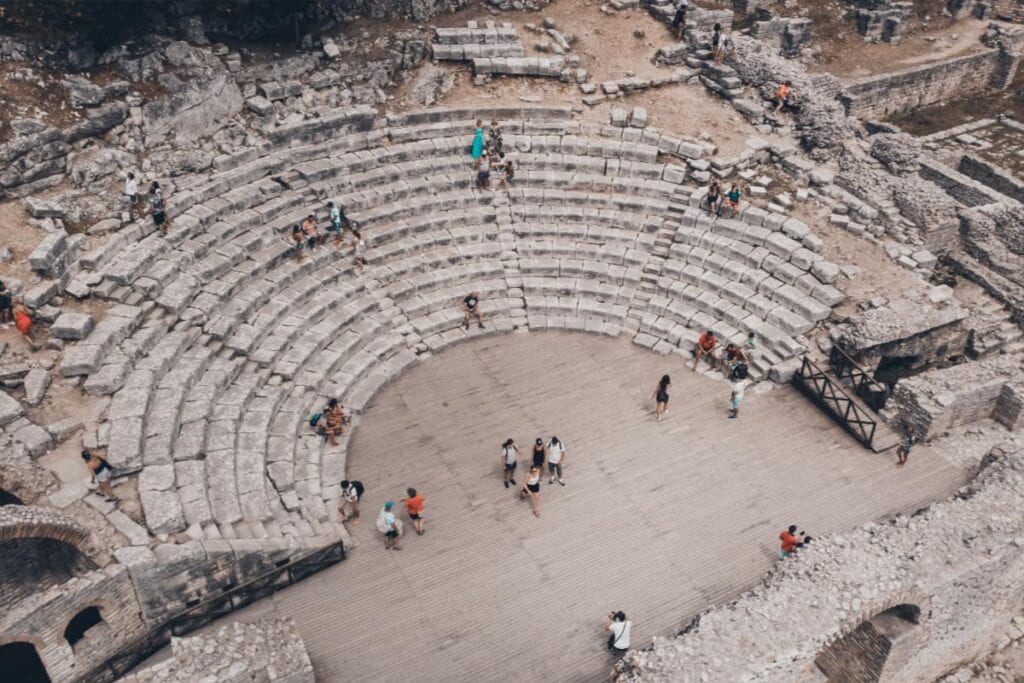Unveiling Albania’s Rich Historical Legacy
Albania’s historical sites are a testament to its complex past, spanning from ancient Illyrian civilizations to Ottoman and communist influences. This guide takes you through some of the country’s most fascinating historical landmarks, providing a deeper understanding of Albania’s heritage.
1. Butrint: A UNESCO World Heritage Site
What to See:
- The amphitheater, baptistery, and the Lion Gate.
- The Venetian Tower, which offers panoramic views of the surrounding wetlands.
Why It’s Special: As one of the most important archaeological sites in the Balkans, Butrint reflects layers of Greek, Roman, Byzantine, and Venetian history.
Tip: Visit early in the morning to enjoy the ruins without the crowds.
2. Gjirokastër Castle: The Pride of the South
What to Explore:
- The National Museum of Armaments, displaying weapons from World War II and the communist era.
- The prison cells, which offer a sobering glimpse into Albania’s history of political oppression.
Why It’s Unique: Perched high above the city, the castle provides stunning views of the Drino Valley and the city’s iconic stone rooftops.
Tip: Attend the Gjirokastër Folk Festival if your visit coincides with it for a cultural treat.
3. Rozafa Castle: The Fortress of Legends
What to Discover:
- The legend of Rozafa, the woman who sacrificed herself to ensure the fortress’s stability.
- Panoramic views of Lake Shkodër, the Drin River, and the surrounding mountains.
Why It’s Significant: Rozafa Castle has been a key defensive structure since Illyrian times, making it a symbol of resilience and unity.
Tip: Wear sturdy shoes, as the climb to the castle is steep and uneven.
4. Apollonia: The Ancient City of Learning
What to Explore:
- The ruins of the ancient agora, theater, and city walls.
- The Monastery of St. Mary, housing the Archaeological Museum of Apollonia.
Why It’s Fascinating: Apollonia was an important center of learning in the Roman Empire, visited even by Julius Caesar.
Tip: Pack a picnic and enjoy the tranquil surroundings after exploring the ruins.
5. Berat Castle: A Living Fortress
What to See:
- The Onufri Museum, which showcases stunning Orthodox icons and frescoes.
- The Church of the Holy Trinity, a hidden gem within the castle’s walls.
Why It’s Unique: Berat Castle is still inhabited, offering a rare glimpse into life within a historic fortress.
Tip: Visit during sunset for breathtaking views of the Osum River and surrounding hills.
6. The Ancient Durrës Amphitheater
What to Explore:
- The largest Roman amphitheater in the Balkans, capable of seating over 20,000 people.
- The nearby Byzantine Forum and Venetian Tower.
Why It’s Special: Durrës Amphitheater provides a tangible connection to Albania’s Roman past.
Tip: Pair your visit with a stroll along the Durrës Promenade and enjoy some seafood by the sea.
7. Kruja Castle: The Birthplace of Albanian Resistance
What to Visit:
- The Skanderbeg Museum, dedicated to Albania’s national hero.
- The Ethnographic Museum, showcasing daily life during the Ottoman era.
Why It’s Inspiring: Kruja Castle was the center of Skanderbeg’s resistance against the Ottoman Empire, making it a symbol of Albanian identity.
Tip: Explore the Old Bazaar for handcrafted souvenirs and traditional Albanian goods.
8. Ali Pasha’s Castle in Porto Palermo
What to Discover:
- The triangular fortress built by Ali Pasha Tepelena, a prominent Albanian ruler.
- Spectacular views of the Ionian Sea and the nearby coastline.
Why It’s Unique: The castle’s strategic location and intriguing history make it a must-visit for history enthusiasts.
Tip: Visit during sunset for incredible photo opportunities.
9. The Ruins of Shurdhah Island
What to Explore:
- The remnants of a medieval village, including churches and fortifications.
- Scenic boat rides to the island, located on Lake Vau-Dejës.
Why It’s Special: Shurdhah Island offers a mix of history and natural beauty, perfect for adventurous travelers.
Tip: Hire a local guide to uncover the island’s hidden stories.
Tips for Visiting Historical Sites in Albania
- Plan Ahead: Check opening hours and entry fees, as some sites may have seasonal schedules.
- Hire a Guide: Local guides provide fascinating insights into the history and legends of each site.
- Respect the Sites: Avoid climbing on ruins or removing artifacts to preserve Albania’s heritage.


